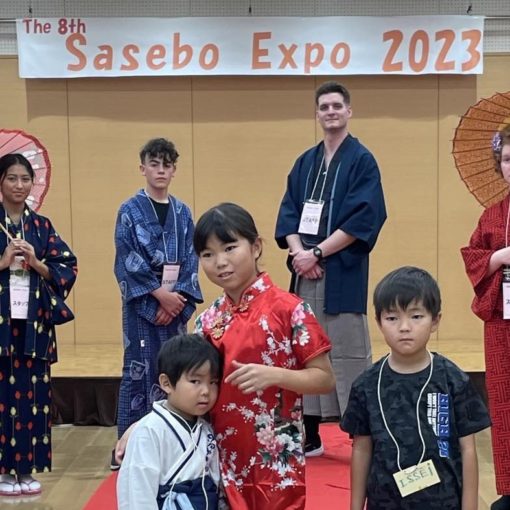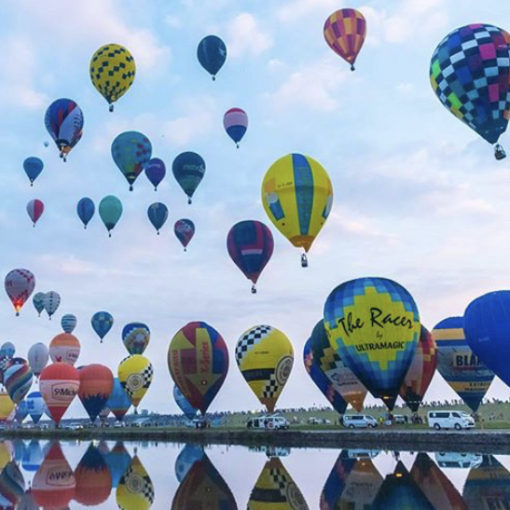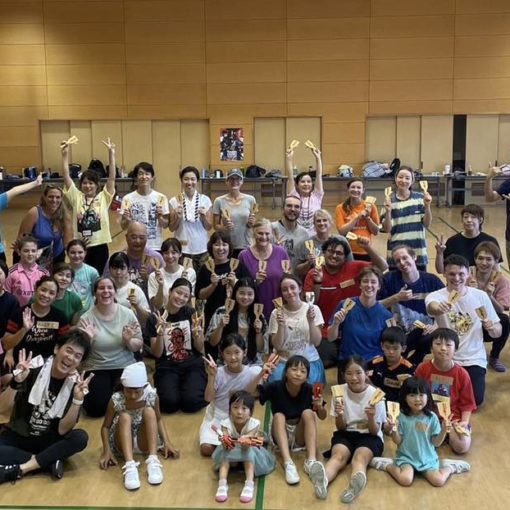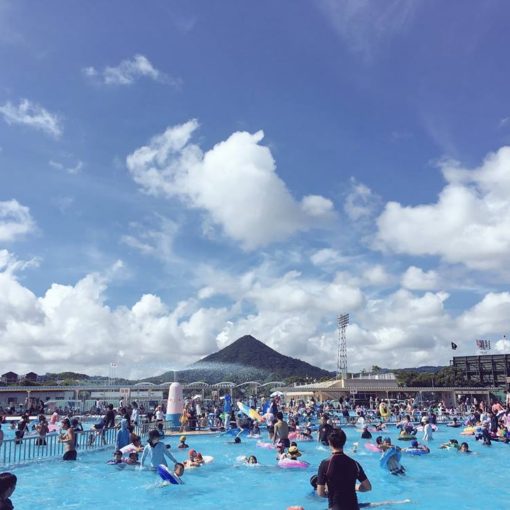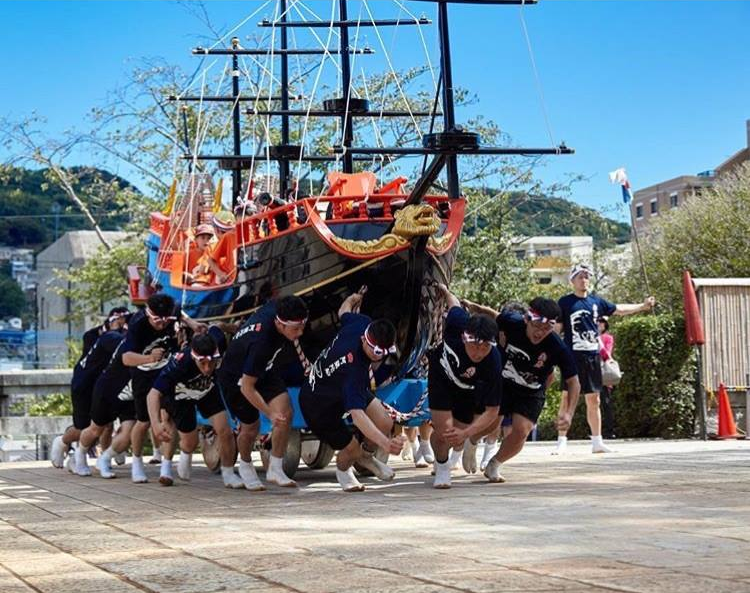
奉納踊りの一つ、曳物。
photo courtesy of / 写真提供: Takashi Tanaka
Nagasaki Kunchi is the autumn festival held annually at Suwa Shinto Shrine in Nagasaki city during October 7-9. It is renowned as one of the best and the biggest festivals of Kyushu region, and is a designated National Important Intangible Folk Cultural Asset. The festival started about 400 years ago as an offering to the shrine and it incorporates different aspects of Chinese and Dutch cultures, which have played a large role in the city’s history.
Another supposed purpose of the festival was to screen out hidden Christians. After Christianity was harshly banned in Nagasaki in 1624, local magistrate forced citizens to offer dances to Suwa Shrine to prove themselves to be Shrine’s parishioners. (Note: there is no such religious intent today)
The festival’s name is believed to have come from ku-nichi (“9th day”), the ninth day of the ninth month of the lunar calendar.
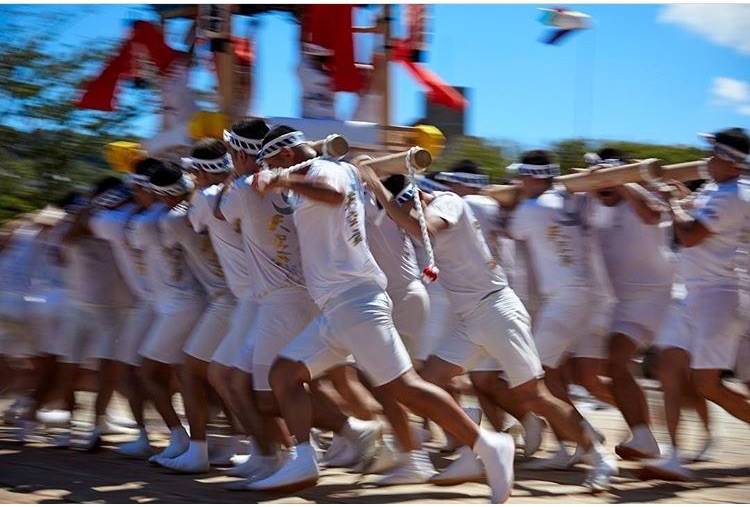
圧巻の船回し!
photo courtesy of / 写真提供: Takashi Tanaka
Several “cho”, or Nagasaki’s town districts take turns to offer the performance every year. Districts in charge that year are called “odori-cho (dance towns), and the turn comes every 7 years. So this means you need to visit 7 years in a row to truly see this festival full scale!
Venues
The four main stages are Suwa Shrine, Otabisho, Yasaka Shrine and Chuo Koen.
These venues require tickets in advance which gets sold out instantly and almost impossible for even locals to reserve. There are some spots where you can take a sneak peek, however they get very crowded so do start early if you want to capture the best moment!
Even if you miss them at the main venues you can still catch them by street-surfing and following the crowd as they travel throughout the city. These type of performances held outside of the main venues are called Niwasakimawari.
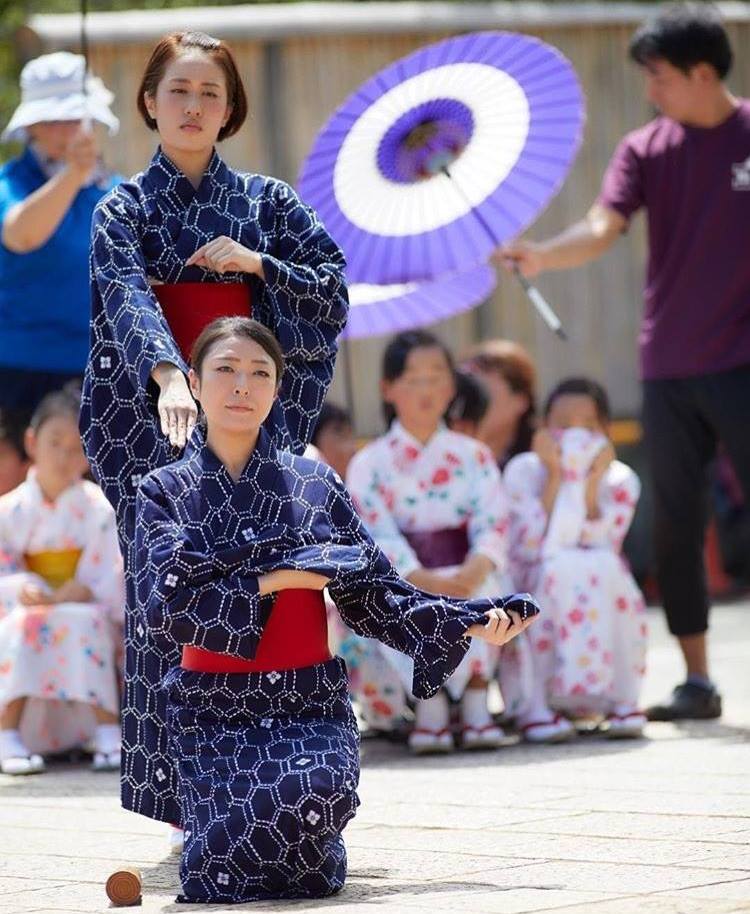
日本舞踊を踊る女性たち。
photo courtesy of / 写真提供: Takashi Tanaka
Time
Performances start from 7AM and ends past 8PM.
Boat spinning, dragon dances… performances are truly unique and grand.
Come and experience the history at the heart of Nagasaki!
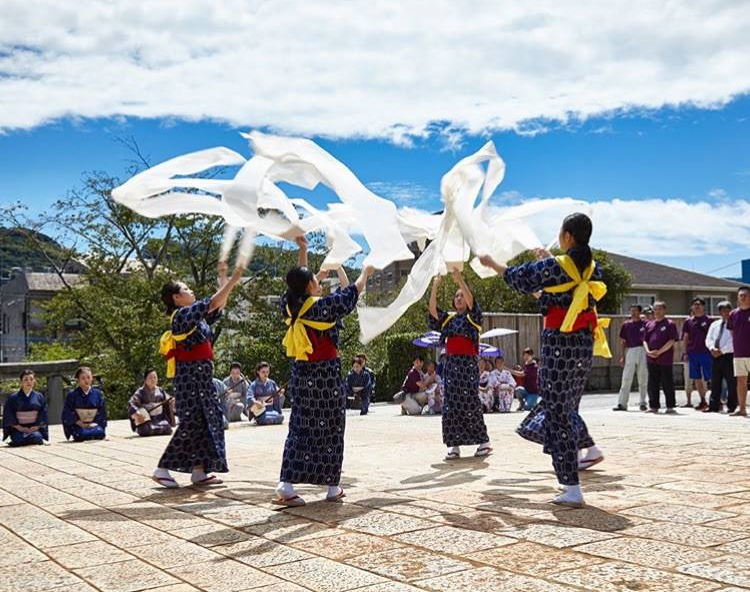
奉納踊りの演し物(だしもの)は大きく分けて、踊り、曳物、担ぎ物、通り物があるそうです。
photo courtesy of / 写真提供: Takashi Tanaka
長崎くんちの季節になりました!
長崎県の総氏神「諏訪神社」の秋季大祭。この奉納踊は、国指定重要無形民俗文化財に指定されています。
長崎くんちの由来は諸説あるそうですが、そのうちの一つは、キリシタンと神仏を信仰する人々の勢力争いの中で、長崎奉行が全長崎町人を諏訪神社の氏子とし、神社への信仰を証明させるために、奉納踊りを演じるのを義務付けた、というもの。複数の宗教がせめぎ合う長崎ならではの話ですね(もちろん現代ではそのような意図はありません!)。
期間は毎年10月7~9日。
メインの会場は 諏訪神社、 お旅所 (おたびしょ)、八坂神社、中央公園の4か所。
上記会場以外を回る「庭先回り」の地図は こちら 、スケジュールは こちら から!
ちなみに「蛇踊り」は Dragon dance や Snake dance。
「踊り町」は district in charge of offering performances that year (その年のパフォーマンスを担当する地域)。district の代わりに town や neighborhood でもOKです。
「船回し」の「船」は boat, ship, float (山車)。「回す」は spin や turn で、合わせて boat spinning などで説明すると良いですね!

